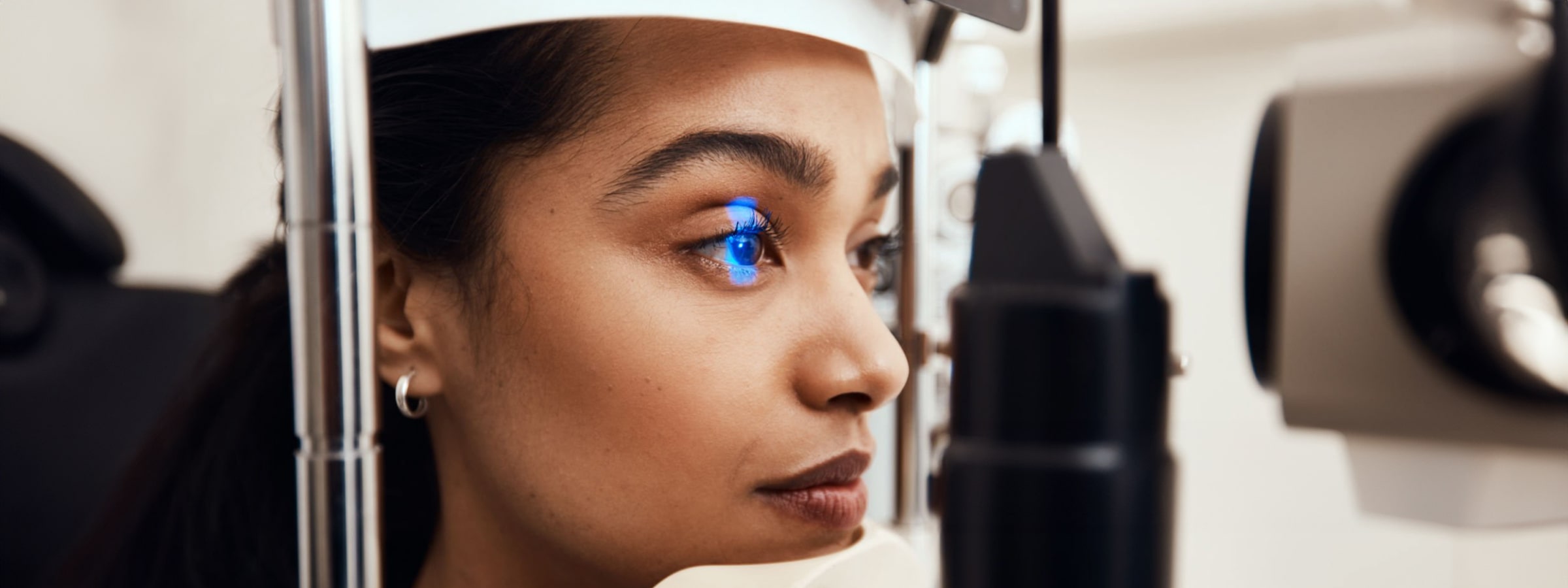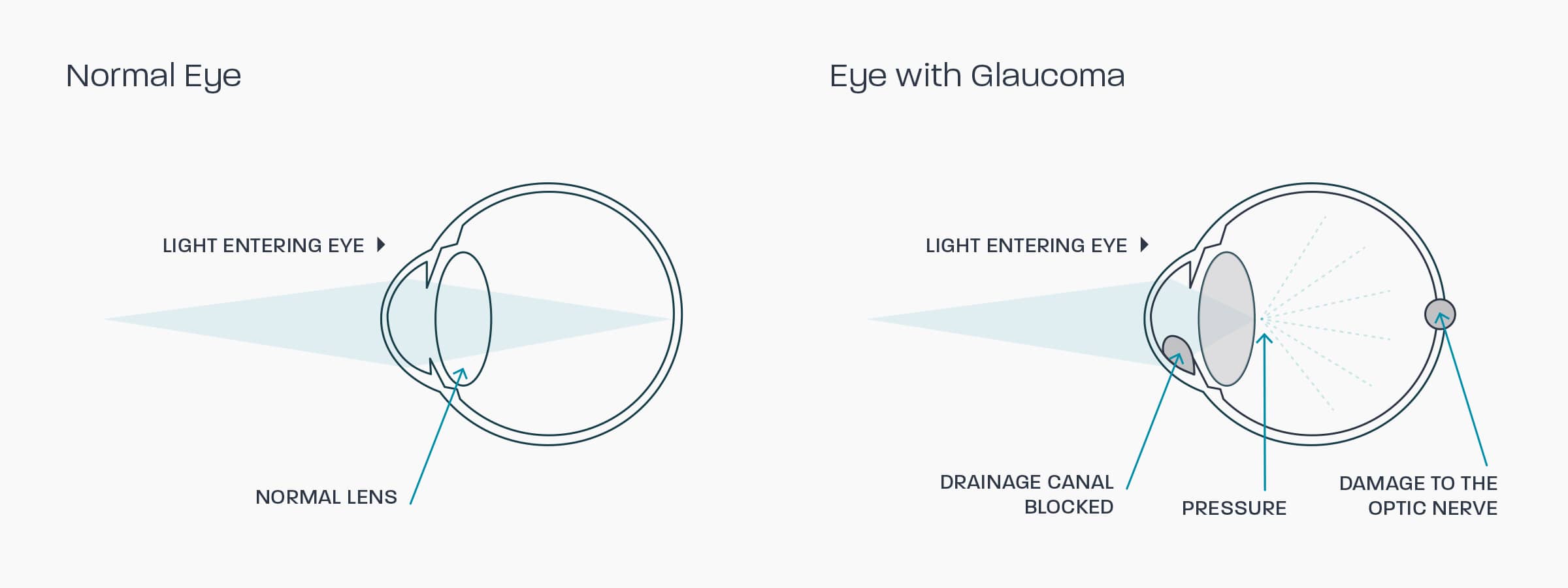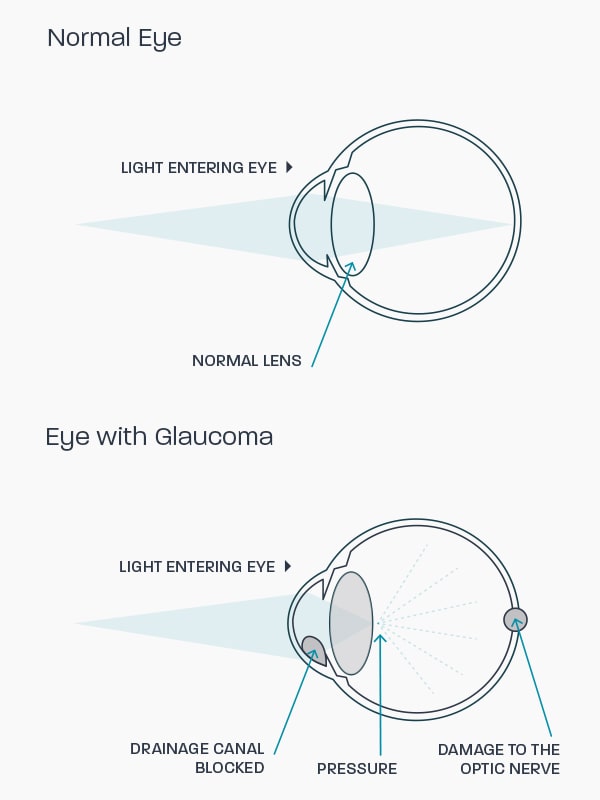Search based on the size of your current glasses
- Shop by shape
- Shop by colour
- Shop by size


Glaucoma is an eye condition that causes the optic nerve, which connects the eye to the brain, to become damaged. It’s normally caused by a build-up of fluid in the front of the eye, which as a result increases pressure inside the eye. Very often it affects both eyes to variable degrees. Most of the time, glaucoma is slow to develop so it can be hard to identify without a professional. It’s best detected in a routine eye exam, which is why it is so important to have regular vision tests.
There are various different types of glaucoma. The most common is called primary open-angle glaucoma.


As the most common type, chronic or primary open-angle glaucoma develops slowly over several years and tends to be pain-free. The drainage tubes in the eye become blocked over time. It can normally only be identified with an eye test.
Also referred to as acute glaucoma, primary angle-closure glaucoma is less common. It’s typically viewed as a medical emergency. The reasoning is because, compared to chronic open-angle glaucoma, primary angle-closure glaucoma occurs much faster due to the drainage in the eye becoming clogged up, causing an abrupt rise in eye pressure. If it’s not treated right away, it can lead to severe loss of vision or even blindness.
Usually glaucoma is linked to high eye pressure, however with normal-tension glaucoma, you may experience gradual blurry vision and over time there will be damage to the optic nerve, but your eye pressure will be within a normal range. It’s believed by scientists to be a type of primary open-angle glaucoma. Due to the fact that the eye pressure is within an average range, it can be much harder to detect in a regular eye exam.
Secondary glaucoma is usually caused by an underlying eye condition, like inflammation of the eye, otherwise known as uveitis. This is often a result of an infection or sports injury.
Also known as congenital glaucoma, this rare type happens in early childhood, affecting a very small number of infants. The onset of congenital glaucoma tends to happen before the age of three and is caused by an abnormality of the eye.
Developmental glaucoma is another kind of childhood glaucoma. It's often detected between the ages of 10 and 20 years. It’s normally linked to mutations in the genes linked to the development of the eye.


There are numerous varieties of glaucoma and symptoms will vary depending on which type you have. Chronic glaucoma impacts your peripheral vision and is fairly painless so will probably be harder to notice. Although, opticians have several quick and painless tests they can carry out to identify it, checking your eye pressure, peripheral vision, examining the retina and assessing your optic nerve. If not treated overtime, you may notice a loss of central vision.
Acute glaucoma happens more quickly as a result of rapid pressure build-up in the eye. Although it is rarer, it's normally very painful. You’ll experience symptoms like intense eye pain, blurry vision, sensitivity around the eye, red eye, nausea, sickness, headaches and you’ll also notice haloes around sources of light. If you experience any of these symptoms, even if they disappear, it's important that you seek immediate medical attention. Get in touch with your optician or visit a nearby A&E department.
There are various causes of glaucoma. Very often it's due to a build-up of pressure in the eye because the fluid, referred to as aqueous humour, is not able to drain properly which then damages the optic nerve and harms the nerve fibres from the light-sensitive retina at the back of your eye. The reasons for this are not totally clear but it most commonly affects older people, especially over 70s. However, it can also occur in younger people and is more predominant amongst those of African, Caribbean or Asian descent, diabetics, or anyone with a close relative with glaucoma.
Glaucoma can lead to loss of vision if it remains undiagnosed and is not treated early. It's not possible to reverse any sight loss that happened before the diagnosis of glaucoma, however treatment can prevent your vision from deteriorating. The required treatment will depend on the type of glaucoma you have. Normally they will be as follows:
If you have glaucoma, you will be asked to attend regular appointments so that a professional can check on your health and check the treatment is working.